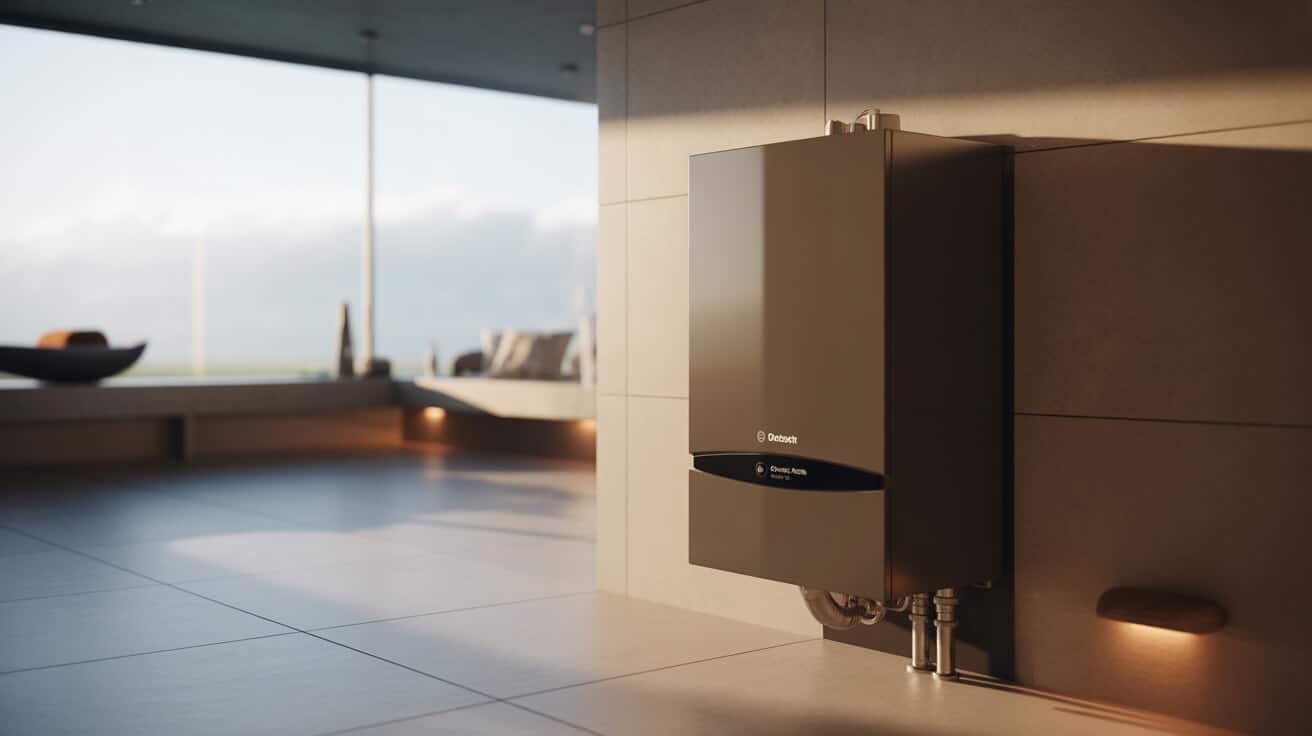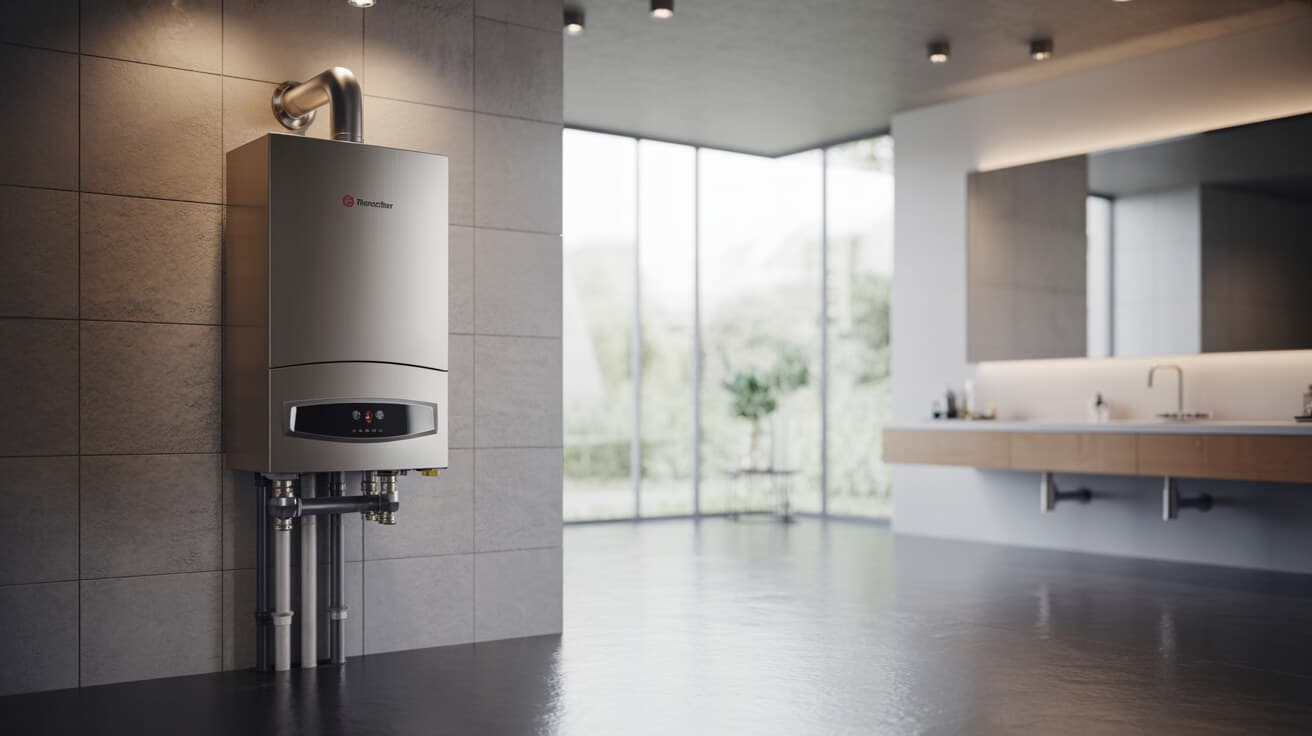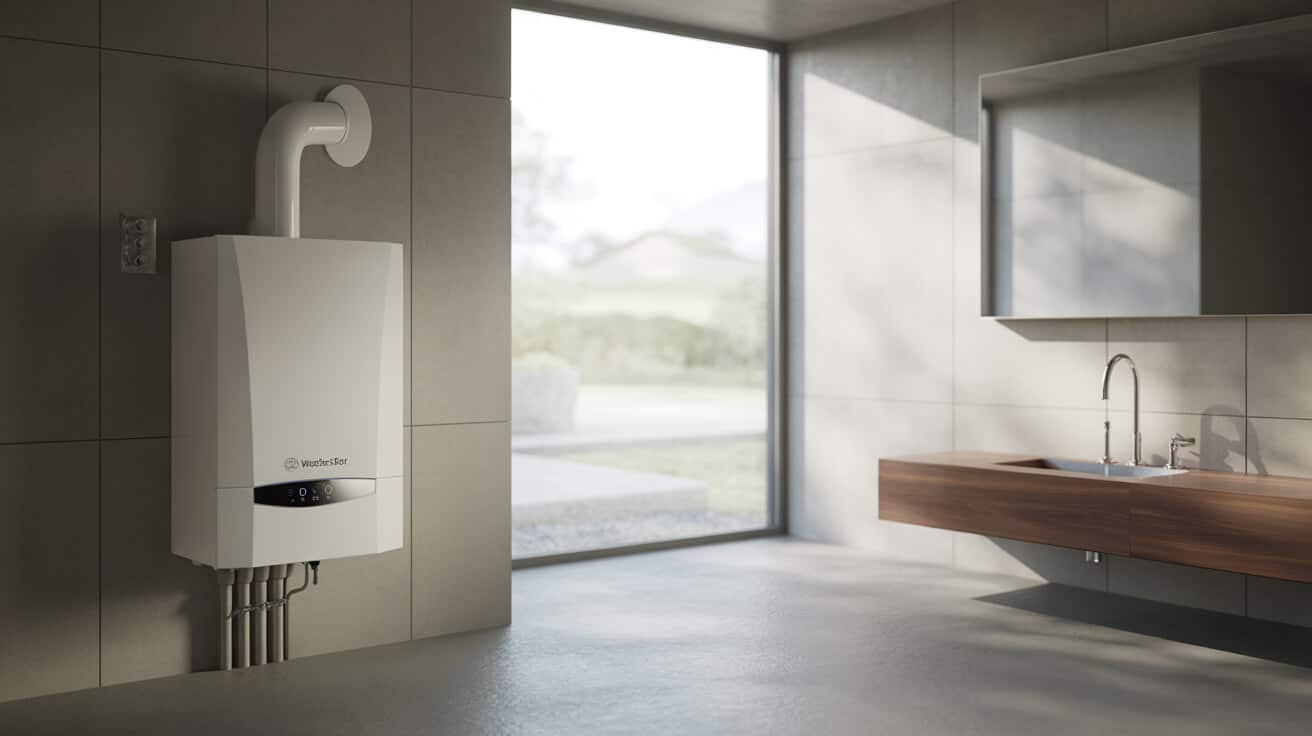The Greenstar 4000 exemplifies the evolution in gas central heating, converting traditional principles into digitally-optimised, low-emissions operation. Available in both combination (combi) and system variants, this series supports comprehensive application coverage, from single-family homes to high-density rental portfolios. Its adaptive performance, spanning 24 kW to 30 kW (combi) and 12 kW to 24 kW (system), supports hot water and heating needs for diverse UK housing stock.
User interaction is managed via a modern digital interface, presenting clear diagnostics and servicing schedules for professional engineers. The system’s modulation technology, high seasonal efficiency (ERP A+), and advanced NOx emissions controls mark a response to contemporary legislation, while extended warranties and aftercare solutions, often provided by Plumbers 4U, underscore the manufacturer’s commitment to customer assurance and long-term reliability.
Etymology or Name Origin
The “Greenstar” designation reflects Worcester Bosch’s intent to unify efficiency, environmental consciousness, and technological advancement under a recognisable family name. The numerical suffix “4000” identifies its sequence within the Greenstar product ladder: above entry-level offerings and below flagship models, catering to the mid-market. The stable nomenclature allows your organisation to match property specifications with appropriate system class rapidly, simplifying decision-making for both consumers and installers.
Overview / Context
Greenstar 4000 is situated at the intersection of regulatory transition, climate policy, and homeowners’ demand for dependable, cost-effective warmth. UK domestic heating accounts for a significant proportion of national energy use, and regulatory changes (including Building Regulations Part L and the Boiler Plus initiative) have prompted a shift toward condensing boiler systems with improved emissions profiles.
Within this context, the Greenstar 4000 delivers adaptive efficiency, digital connectivity, and compatibility with smart home controllers, weather compensation, and hydrogen-blend readiness. The system is engineered for backward compatibility where required, assisting landlords and property managers in upgrading legacy stock with minimal intrusive work. Its deployment also supports organisational carbon reduction goals through improved SAP/EPC ratings and integration with remote management platforms where needed.
History
Origins
Condensing technology originated in the 1980s and came to dominate British boiler installations after regulatory mandates in the mid-2000s. The Greenstar line emerged as a response to evolving efficiency benchmarks, with early models prioritising mechanical robustness and installer accessibility.
Sector Adoption
The modern Greenstar family was bolstered by Bosch Thermotechnology’s acquisition, infusing the lineage with expanded R&D and engineering discipline, leading to robust, modular systems suited to rapid mass rollout by companies like Plumbers 4U. This positioned the brand at the forefront of rental, social, and private sector heating infrastructure.
Contemporary Evolution
The Greenstar 4000 superseded popular models such as the Greenstar i, aggregating feedback from decades of both user and engineer experiences. The series introduced hydrogen blend compatibility (20%), a digital interface, greater modulation ratio for fuel saving, and further reduction in installation time/drainage footprint. These advances were shaped by landlord compliance regimes, the proliferation of managed housing, and the rise of digitally-engaged property managers seeking transparent maintenance records and energy performance.

Concept / Description
System Architecture
Greenstar 4000 boilers are purpose-built condensing systems, utilising a high-efficiency aluminium-silicon heat exchanger to maximise energy reclamation from exhaust gases. The integration of electronically controlled gas valves, modulating burners, and smart fan assembly ensures real-time optimization of combustion.
A multi-stage safety system, incorporating pressure relief, condensate management, and NOx reduction, is standard. Fault-tolerant design enables your engineer to identify and resolve errors using integrated diagnostics, and the robust component configuration supports longevity in varied water qualities and system pressures.
Technical Differentiators
Combi models combine hot water and central heating functionality in a single unit, prioritising instantaneous delivery with minimal pipework and cylinder requirements. System boilers separate domestic hot water generation—feeding an unvented or vented cylinder—for properties with high or simultaneous hot water demand.
User Interface and Controls
An onboard LCD control displays system health, service reminders, and energy consumption insights. Intuitive control logic simplifies setup and empowers users to adjust settings efficiently. The design supports discrete integration into kitchen cupboards, airing cupboards, or utility spaces, complemented by optional digital thermostats and smart control connectivity.
Functionality / Purpose / Applications
Property Types Supported
Greenstar 4000 is deployed widely in:
- Semi-detached and terraced houses;
- Flats and maisonettes with moderate hot water demand;
- Rental dwellings and HMOs, where maintenance traceability and consistent warranty coverage are essential;
- Light commercial units and shared-build environments requiring scalable energy outputs.
Use Case Matrix
| Application | Combi | System |
|---|---|---|
| Single bathroom homes | Highly suited | Suited |
| Multiple bathrooms | Limited (simultaneity) | Suited (via cylinder) |
| Apartment conversions | Space-optimised | Best for larger or multi-unit |
| Retrofit, EPC uplift | Direct replacement | Central system upgrades |
| Social housing/portfolio | Service efficiency | Control, integration options |
Modernization and Retrofitting
The model’s compact form factor eases installation in properties with restricted site access. For property managers, the Greenstar 4000’s ability to interface with legacy or advanced zoning and filtration hardware assists with rapid turnover and ongoing operational cost reduction, further supported by standardised service intervals available from trusted providers such as Plumbers 4U.
Control Compatibility
Flexible integration with smart thermostats (EasyControl, Nest, Hive, Tado), wireless programmers, and weather compensation significantly enhances your control over energy use, adapting distribution to occupancy, external temperature, or planned schedules.
Classifications / Types / Variants
Model Portfolio
- Combi: 24kW, 30kW output variants supporting direct DHW delivery for most UK domestic settings.
- System: 12kW, 15kW, 18kW, 21kW, 24kW variants, scaling output to multi-bathroom, high-demand, or multi-zone dwellings.
- All models certified for 20% hydrogen blend readiness and classified in ERP A+ efficiency bands with OpenTherm or equivalent smart controls.
Comparative Framework
| Model | Output (kW) | DHW Flow (l/min) | Suitable For |
|---|---|---|---|
| Greenstar 4000 24C | 24 | 10.2 | Small to medium homes |
| Greenstar 4000 30C | 30 | 12.3 | Medium homes/multi-users |
| Greenstar 4000 Sys | 12–24 | Cylinder dependent | Large properties, commercial |
Adjacent Models
- Greenstar 2000: Entry-level, apartments; value-focused.
- Greenstar 8000: High demand, large detached, premium integrations.
Systems / Tools / Methodologies
Installation and Commissioning
Certified engineers employ rigorous pre-commissioning (pipework, pressure testing, zone balancing), validated by Benchmark logbooks. Modern diagnostic tools, including digital combustion analyzers, are essential for regulatory signoff and full warranty activation. Powerflushing and magnetic filtration are best-practices, mitigating potential for sludge and extending system service life.
Service Regimes
Annual maintenance, generally performed by companies like Plumbers 4U, includes:
- Flue and combustion analysis
- Philtre cleaning/replacement
- Gas valve recalibration
- Firmware/control updates
- Full pressure and system evaluation
Control and Accessory Integration
Greenstar 4000 is adaptable to a spectrum of controls, supporting direct OpenTherm programming, wireless stat pairing, and multi-zone setups. This enables your organisation to offer both granular comfort and broad system diagnostic coverage, reducing future downtime.

Stakeholders / Entities Involved
Homeowners
Your selection of a Greenstar 4000 reflects a prioritisation of reliability, operational control, and cost predictability. Smart home enthusiasts, families, and working professionals value the integration with digital platforms and the minimal intervention servicing.
Landlords and Property Managers
Routine documentation simplifies your compliance with legislation and supports portfolio-wide energy and maintenance oversight. The system’s fault logging and remote diagnostics reduce unnecessary callouts, streamlining management for larger stocks.
Installation and Maintenance Providers
For your business, the Greenstar 4000 provides engineered predictability and minimised callbacks. Engineers experience streamlined installation windows and clear service patterns, aided by control interoperability and widespread part availability.
Commercial Decision Makers
Smaller commercial setups, such as shops or care homes, benefit from modular configuration, integration with building management systems, and scalable output, allowing your organisation to meet both comfort and regulatory objectives.
Legal / Regulatory / Ethical Considerations
Legal and Compliance Frameworks
Compliance rests on Building Regulations (notably Part L for energy efficiency), Gas Safe certification, and, for unvented systems, G3 qualifications. Correct completion of the Benchmark commissioning record is a legal requisite for warranty validation and provides protection for both installers and property owners.
Ethics and Consumer Protection
The product’s clear documentation and access to certified servicing networks (such as Plumbers 4U) serve as intrinsic consumer safeguards. Tenancy and rental environments prioritise landlord transparency, service schedule reporting, and adherence to WRAS potable water standards.
Warranty and Documentation
Seven- to ten-year warranty cover is conditional on correct installation and documented service intervals. Owners should archive all paperwork for insurance, resale, and compliance contexts, ensuring clear service trails for all stakeholders in your value chain.
Performance Metrics / Data / Measurements
Operational Efficiency
- SEDBUK efficiency up to 94%, ensuring above-average seasonal performance for new and retrofit installations.
- Low NOx operation meets or exceeds Class 6 (≤30mg/kWh), aligning with air quality and environmental targets.
Output and Modulation
The advanced burner and fan technology facilitate a wide modulation ratio (1:8), supporting proportional energy use to current heating demand. This yields operational economy by minimising off-cycle losses and assists in zoning system comfort control.
Warranty, Reliability, and Service Data
- Documented failure/revisit rates among the lowest in its class, a reflection of both robust design and the effectiveness of the mandatory documentation/servicing regime.
- Aftercare support is provided by both manufacturer and third-party accredited engineers, with Plumbers 4U offering rapid-response service frameworks.
Maintenance Cycles
Planned annual service intervals, as well as in-built philtre and cleaning alerts, reduce likelihood of unexpected downtime for users, ensuring longevity and maintaining manufacturer guarantee status.
Challenges / Barriers / Limitations
Technical and Operational Issues
Engineers occasionally encounter site-constraint difficulties such as flue routing, legacy zone valve integration, or insufficient pre-installation system flush. Solutions include coordinated planning with installation teams and use of flexible flue components.
Economic and Social Constraints
For large or multi-occupancy buildings, initial capital outlay and the requirement for periodic professional maintenance may deter rapid installation. Landlords facing regulation-driven changeovers may also experience scheduling and budget pressure.
Adaptation and Upgrade Barriers
Some legacy pipework or non-standard building specifications necessitate additional upgrade work or ancillary controls to attain the full benefits of the condensing/low-NOx system. Owners are advised to consult accredited surveyors prior to purchase if properties exhibit atypical system configurations.
Troubleshooting Pathways
The digital display provides user-level diagnostic feedback for minor resets. However, persistent errors warrant professional intervention. Warranty documentation reinforces urgency in contacting certified providers rather than attempting non-expert repairs.
Impact / Influence / Legacy
Market Impact
The Greenstar 4000 has become a reference point in the mid-range boiler category, fueling sector competition and establishing new benchmarks in warranty, energy efficiency, and servicing simplicity. Its presence in both new housing and legacy renovation projects is widespread, due in part to the services provided by national installers and local specialists such as Plumbers 4U.
Professional Practice Shaping
Standardisation around modular installation, electronic benchmarking, and integrated control systems has redefined property manager and engineer interactions with heating technology. Landlords benefit from clearer documentation and less ambiguous compliance paths.
Perceived Value
Owners and tenants cite improved comfort, measurable savings, and a reduction in reactive maintenance overhead as key benefits. The reliability profile further strengthens decision makers’ commitment to the brand for future upgrades.
Future directions, cultural relevance, and design discourse
Anticipated legislative shifts may require further adaptation toward full hydrogen compatibility, dynamic zoning, and networked monitoring. The Greenstar 4000 architecture is positioned for upgradeability, reflecting anticipation of regulatory, technological, and social change.
Emerging discourses in green housing highlight the system’s role in supporting decarbonization pathways, meeting stricter EPC standards, and enabling responsive home environments. For design thought leaders and building services professionals, the boiler’s integration of digital, environmental, and operational priorities offers a blueprint for future product evolution, ensuring your properties benefit from advances in comfort, compliance, and sustainability.

